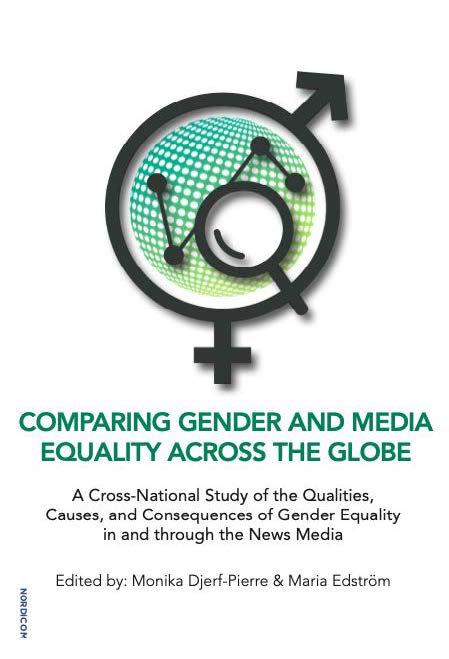
23 Nov Gender equality and the world’s news media
Drawing on data from the Global Media Monitoring Project (GMMP), European Institute for Gender Equality (EIGE), and the International Women’s Media Foundation (IWMF), this book offers new insights into the qualities, causes, and consequences of gender equality in and through the news media.
The book contributes to the critical discussion on gender and journalism, showing that the news media do not reflect reality when it comes to the actual progress of gender equality in societies across the globe. The study aims to inspire future research by making existing data on gender and news media equality available to the global research community. The book presents the GEM-dataset, comprising hundreds of indicators on media and gender equality, and the GEM-Index, an easy to use measure to keep track of key aspects of gender equality in television, radio, newspapers, and online.
Editors: Monika Djerf-Pierre & Maria Edström
Comparing gender and media equality across the globe: Understanding the Qualities, causes, and consequences
Monika Djerf-Pierre & Maria Edström
The GEM-Index: Constructing a unitary measure of gender equality in the news
Monika Djerf-Pierre & Maria Edström
Media gender equality regimes: Exploring media organisations’ policy adoption across nations
Claudia Padovani & Rossella Bozzon
Explaining gender equality in news content: Modernisation and a gendered media field
Monika Djerf-Pierre
Axes of power: Examining women’s access to leadership positions in the news media
Carolyn M. Byerly & Katherine A. McGraw
The media-world versus the real world of women and political representation: Questioning differences and struggling for answers
Karen Ross, Marloes Jansen, & Tobias Bürger
Fairer sex or fairer system? Exploring the relationship between gender equality in the media and media corruption
Mathias A. Färdigh
Gender in economic journalism: Impeccably accurate or smoke and mirrors?
Sarah Macharia
“A trailblazing collection of first-rate studies by leading researchers in all parts of the world. The book, splendidly edited, fulfils the much-needed comparative analysis of gender equality in and through news media in different regions. It is unique, full of useful empirical evidence, new insights, and reflections. This is without doubt required reading for all who negotiate with this issue – not least from an Agenda 2030 perspective”. – Professor Ulla Carlsson, UNESCO Chair on Freedom of Expression, Media Development and Global Policy at the University of Gothenburg

No Comments